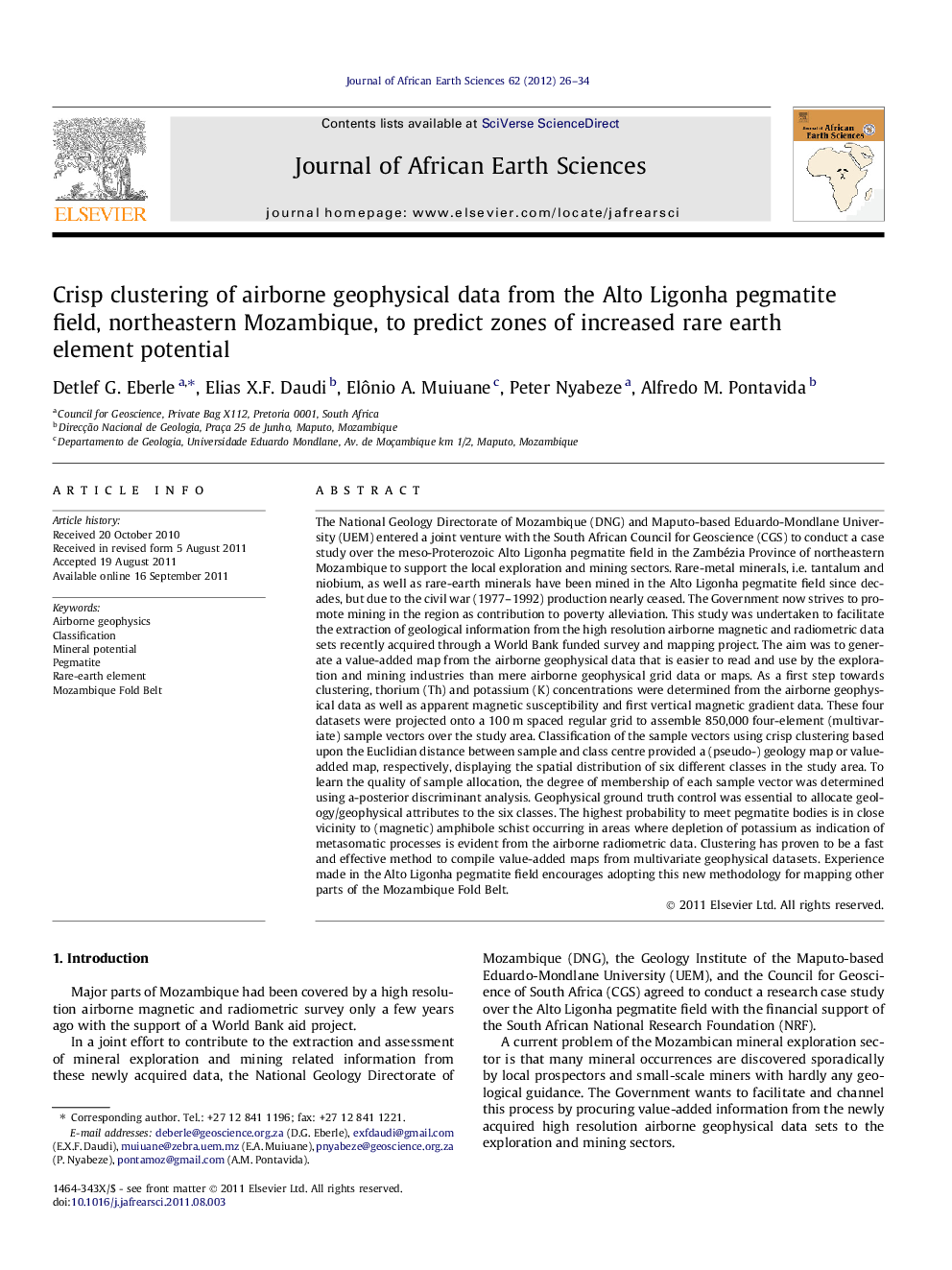| کد مقاله | کد نشریه | سال انتشار | مقاله انگلیسی | نسخه تمام متن |
|---|---|---|---|---|
| 4729104 | 1356502 | 2012 | 9 صفحه PDF | دانلود رایگان |

The National Geology Directorate of Mozambique (DNG) and Maputo-based Eduardo-Mondlane University (UEM) entered a joint venture with the South African Council for Geoscience (CGS) to conduct a case study over the meso-Proterozoic Alto Ligonha pegmatite field in the Zambézia Province of northeastern Mozambique to support the local exploration and mining sectors. Rare-metal minerals, i.e. tantalum and niobium, as well as rare-earth minerals have been mined in the Alto Ligonha pegmatite field since decades, but due to the civil war (1977–1992) production nearly ceased. The Government now strives to promote mining in the region as contribution to poverty alleviation. This study was undertaken to facilitate the extraction of geological information from the high resolution airborne magnetic and radiometric data sets recently acquired through a World Bank funded survey and mapping project. The aim was to generate a value-added map from the airborne geophysical data that is easier to read and use by the exploration and mining industries than mere airborne geophysical grid data or maps. As a first step towards clustering, thorium (Th) and potassium (K) concentrations were determined from the airborne geophysical data as well as apparent magnetic susceptibility and first vertical magnetic gradient data. These four datasets were projected onto a 100 m spaced regular grid to assemble 850,000 four-element (multivariate) sample vectors over the study area. Classification of the sample vectors using crisp clustering based upon the Euclidian distance between sample and class centre provided a (pseudo-) geology map or value-added map, respectively, displaying the spatial distribution of six different classes in the study area. To learn the quality of sample allocation, the degree of membership of each sample vector was determined using a-posterior discriminant analysis. Geophysical ground truth control was essential to allocate geology/geophysical attributes to the six classes. The highest probability to meet pegmatite bodies is in close vicinity to (magnetic) amphibole schist occurring in areas where depletion of potassium as indication of metasomatic processes is evident from the airborne radiometric data. Clustering has proven to be a fast and effective method to compile value-added maps from multivariate geophysical datasets. Experience made in the Alto Ligonha pegmatite field encourages adopting this new methodology for mapping other parts of the Mozambique Fold Belt.
► Data integration accomplished by way of multivariate statistical analyses.
► K-means clustering of airborne geophysical data set from the Alto Ligonha pegmatite field.
► Easy-to-use value-added map compiled from classification result.
► Substantial pegmatite potential in nearby area predicted and verified.
Journal: Journal of African Earth Sciences - Volume 62, Issue 1, January 2012, Pages 26–34